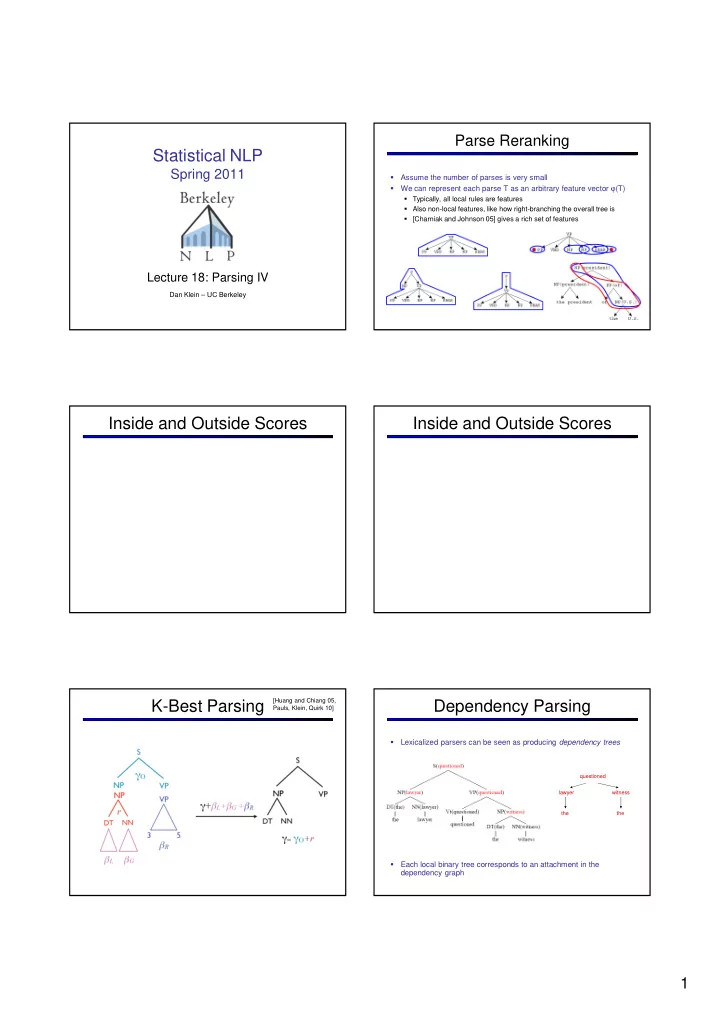

Parse Reranking Statistical NLP Spring 2011 � Assume the number of parses is very small We can represent each parse T as an arbitrary feature vector ϕ (T) � � Typically, all local rules are features � Also non-local features, like how right-branching the overall tree is � [Charniak and Johnson 05] gives a rich set of features Lecture 18: Parsing IV Dan Klein – UC Berkeley Inside and Outside Scores Inside and Outside Scores [Huang and Chiang 05, K-Best Parsing Dependency Parsing Pauls, Klein, Quirk 10] Lexicalized parsers can be seen as producing dependency trees � questioned lawyer witness the the � Each local binary tree corresponds to an attachment in the dependency graph 1
Shift-Reduce Parsers Dependency Parsing � Pure dependency parsing is only cubic [Eisner 99] � Another way to derive a tree: X[h] h Y[h] Z[h’] h h’ i h k h’ j h k h’ � Some work on non-projective dependencies � Common in, e.g. Czech parsing � Can do with MST algorithms [McDonald and Pereira 05] � Parsing � No useful dynamic programming search � Can still use beam search [Ratnaparkhi 97] Data-oriented parsing: TIG: Insertion � Rewrite large (possibly lexicalized) subtrees in a single step � Formally, a tree-insertion grammar � Derivational ambiguity whether subtrees were generated atomically or compositionally � Most probable parse is NP-complete Tree-adjoining grammars TAG: Long Distance Start with local trees � � Can insert structure with adjunction operators � Mildly context- sensitive � Models long- distance dependencies naturally � … as well as other weird stuff that CFGs don’t capture well (e.g. cross- serial dependencies) 2
CCG Parsing Syntax-Based MT � Combinatory Categorial Grammar � Fully (mono-) lexicalized grammar � Categories encode argument sequences � Very closely related to the lambda calculus (more later) � Can have spurious ambiguities (why?) Translation by Parsing Translation by Parsing Learning MT Grammars Extracting syntactic rules Extract rules (Galley et. al. ’04, ‘06) 3
Rules can... Bad alignments make bad rules � capture phrasal translation � reorder parts of the tree � traverse the tree without reordering � insert (and delete) words This isn’t very good, but let’s look at a worse example... Sometimes they’re really bad One bad link makes a totally unusable rule! 4
Recommend
More recommend